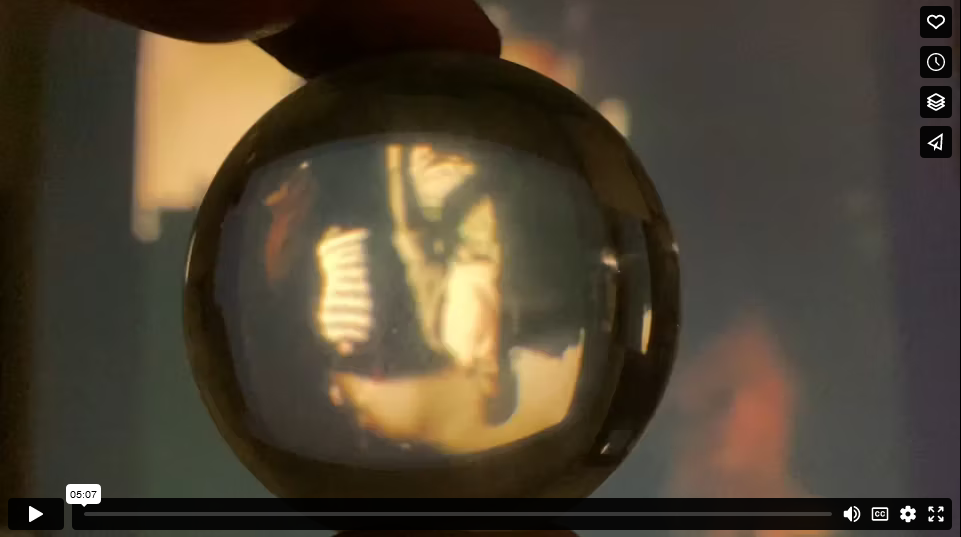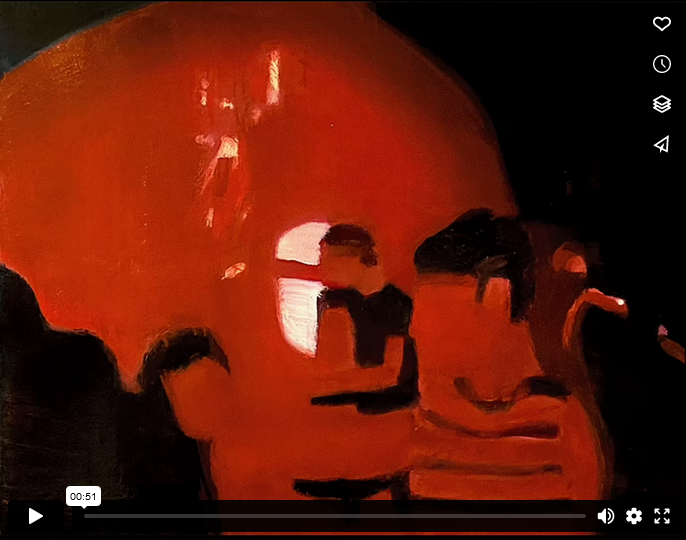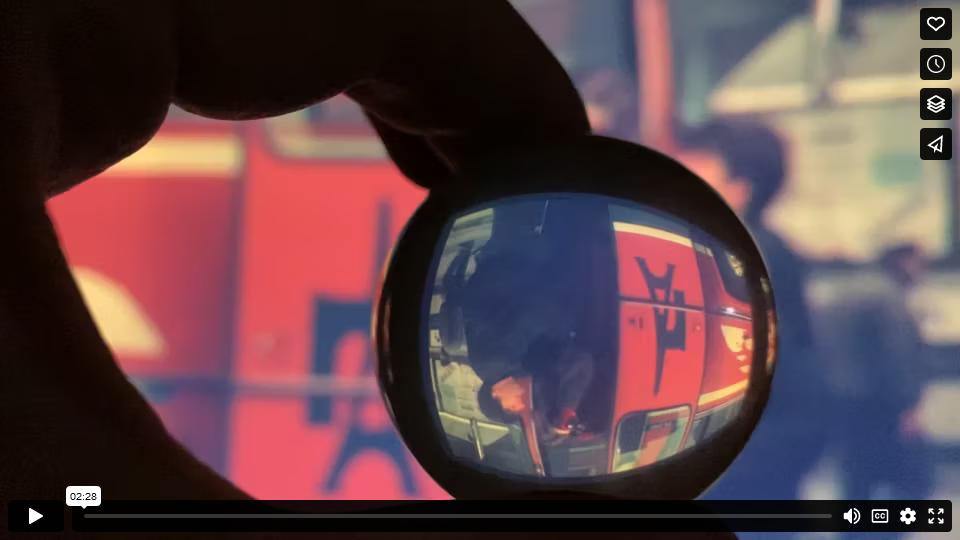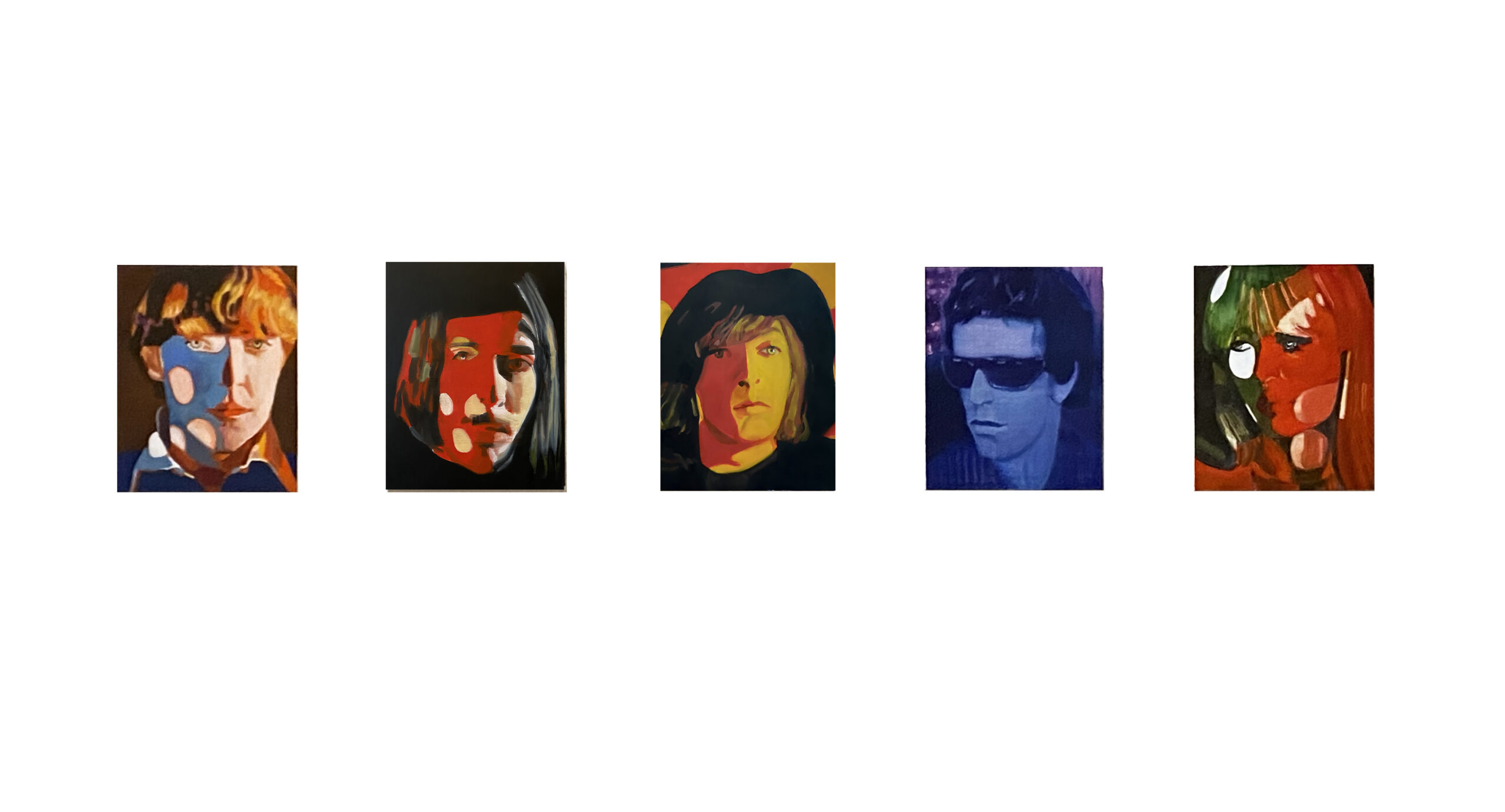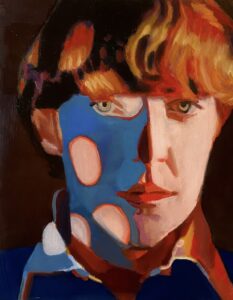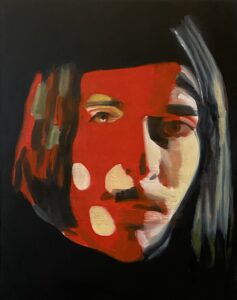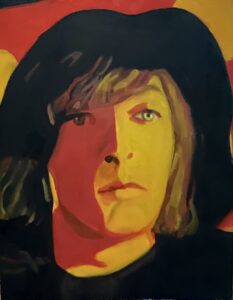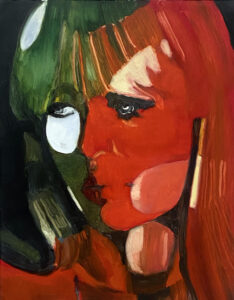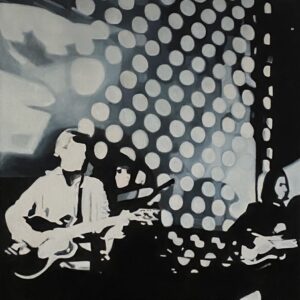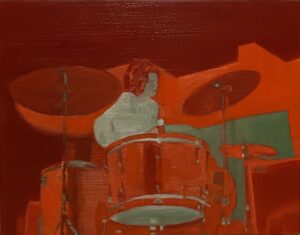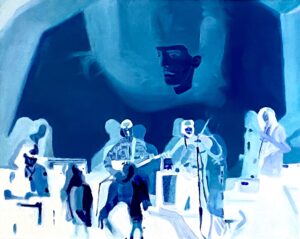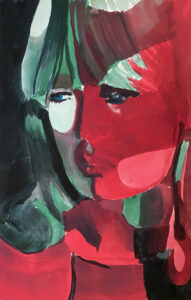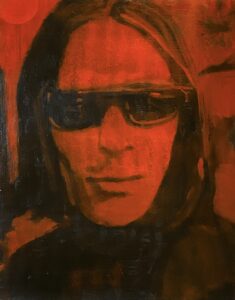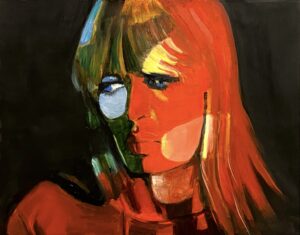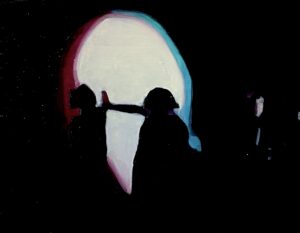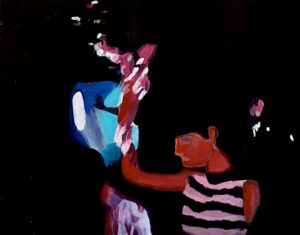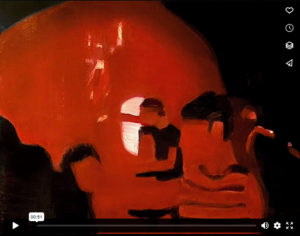Projections is an exhibition of paintings and video in which artist Marcelino Stuhmer is engaged with the history of painting, and cinema through the visual, metaphoric, and narrative use of projection. There is a focus on the still image removed from, yet inextricably linked to the indexical pattern of cinematic and photographic time. Stuhmer is fascinated by the developmental history of photography and film, from the camera obscura, used by painters for centuries to better see and understand light and color perception, to film projection in movie theaters, on to Andy Warhol’s live “expanded cinema” and performance events from 1966-1967, called the Exploding Plastic Inevitable (EPI). EPI events featured rock band The Velvet Underground and Nico playing live. The avant-garde interdisciplinary art event included flashing colors, lights, and still images, while three film projectors cast films directly onto the musicians and dancers. Stuhmer watched and studied footage from the Exploding Plastic Inevitable, Warhol’s 1966 film Chelsea Girls, directed by Paul Morrisey, and examined album art for the Velvet Underground. In response, Stuhmer created a new body of work that commemorates the histories of expanded cinema, and the use of cinematic scale projections within concerts, theater, film, and visual art. Equally important is the Velvet Underground’s influence on punk, post punk, and alternative music, and the history of women in rock music with two of the five musicians being women, including Moe Tucker on drums, and Nico on vocals and tambourine.
The exhibition centers around a 5-panel group portrait of the band titled, The Velvet Underground and Nico, 2023. Portraits of Sterling Morrison, Moe Tucker and Nico all incorporate the use of high key color and pattern projections on their faces. Intense monochromatic portraits of John Cale and Lou Reed wearing their sunglasses approximate the effect of looking through a lens. Using an activated zigzag brushwork pattern that is pushed through and across the painted image, the surface of the paint creates a physical and visual trace and allusion of time, distance, and movement. The contrast of the warm and cool colors of each image suggests a contextual, complementary, and at times combative relationship between the two band members. Critical in Stuhmer’s work, are the cinematic references where the lo-tech process of painting takes on the high-tech processing of film and video. Through a conceptual approach to painting, Stuhmer investigates the cinema as a projection of shared culture, and as an alternative reality, where time can slow down to a stop.
Oil on panel
Video
